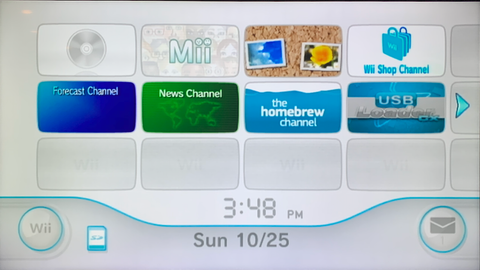

- #Using homebrew channel for free
- #Using homebrew channel how to
- #Using homebrew channel mac os
- #Using homebrew channel update
For NTSC-U and NTSC-J use Yu-Gi-Vah.īathaxx requires a copy of LEGO Batman, and will work for NTSC-U, NTSC-J and PAL Wiis. Yu-Gi-OWNED! requires a copy of Yu-Gi-Oh 5D's Wheelie Breakers, it will only work on PAL Wiis. Indiana Pwns requires a copy of Lego Indiana Jones: The Original Adventures, and will work for NTSC-U, NTSC-J and PAL Wiis. Smash Stack requires a copy of Super Smash Bros Brawl, and will work on all wiis. The latest version of Wii System Menu is 4.3, therefore, this method should work for ALL USA, Japanese, Korean and PAL Wiis. This tutorial applies to versions of the Wii System Menu ranging from 3.0 to 4.3. The methods described in this tutorial covers the Smash Stack, Yu-Gi-OWNED!, Bathaxx, Return of the Jodi, Indiana Pwns, Eri HaKawai and Letterbomb exploits as these are the only methods working for 4.3 other methods of installing the Homebrew Channel for users with older System Menus are Bannerbomb and Twilight Hack.
#Using homebrew channel how to
Notably, zsh, fish, tcsh and csh will not work.This is a step-by-step guide of how to install the Homebrew Channel on your Wii console.
#Using homebrew channel for free
Sign up for free at Apple’s website.Ĥ The one-liner installation method found on brew.sh requires the Bourne-again shell, i.e.
#Using homebrew channel mac os
Downloading Xcode may require an Apple Developer account on older versions of Mac OS X. You can install Xcode, the CLT, or both Homebrew supports all three configurations. A handful require a full Xcode installation. For 10.4–10.6 see Tigerbrew.ģ Most formulae require a compiler. Uninstallationġ For 32-bit or PPC support see Tigerbrew.Ģ 10.15 or higher is recommended, while 10.10–10.14 are supported on a best-effort basis. in automation scripts), prepend NONINTERACTIVE=1 to the installation command. If you want a non-interactive run of the Homebrew installer that doesn’t prompt for passwords (e.g. to have a system set of libs in the default prefix and tweaked formulae for development in ~/homebrew. Whichever brew command is called is where the packages will be installed.

#Using homebrew channel update
Pick another prefix at your peril!īrew update -force -quiet chmod -R go-w " $(brew -prefix ) /share/zsh" Multiple installationsĬreate a Homebrew installation wherever you extract the tarball. One of the reasons Homebrew just works relative to the competition is because we recommend installing here. Some things may not build when installed elsewhere. However do yourself a favour and use the installer to install to the default prefix.
/hombrewbrowser-580705183df78cbc28b1f496.jpg)
It is a careful script it can be run even if you have stuff installed in the preferred prefix already. This script installs Homebrew to its preferred prefix ( /usr/local for macOS Intel, /opt/homebrew for Apple Silicon and /home/linuxbrew/.linuxbrew for Linux) so that you don’t need sudo when you brew install. Instructions for a supported install of Homebrew are on the homepage.


 0 kommentar(er)
0 kommentar(er)
